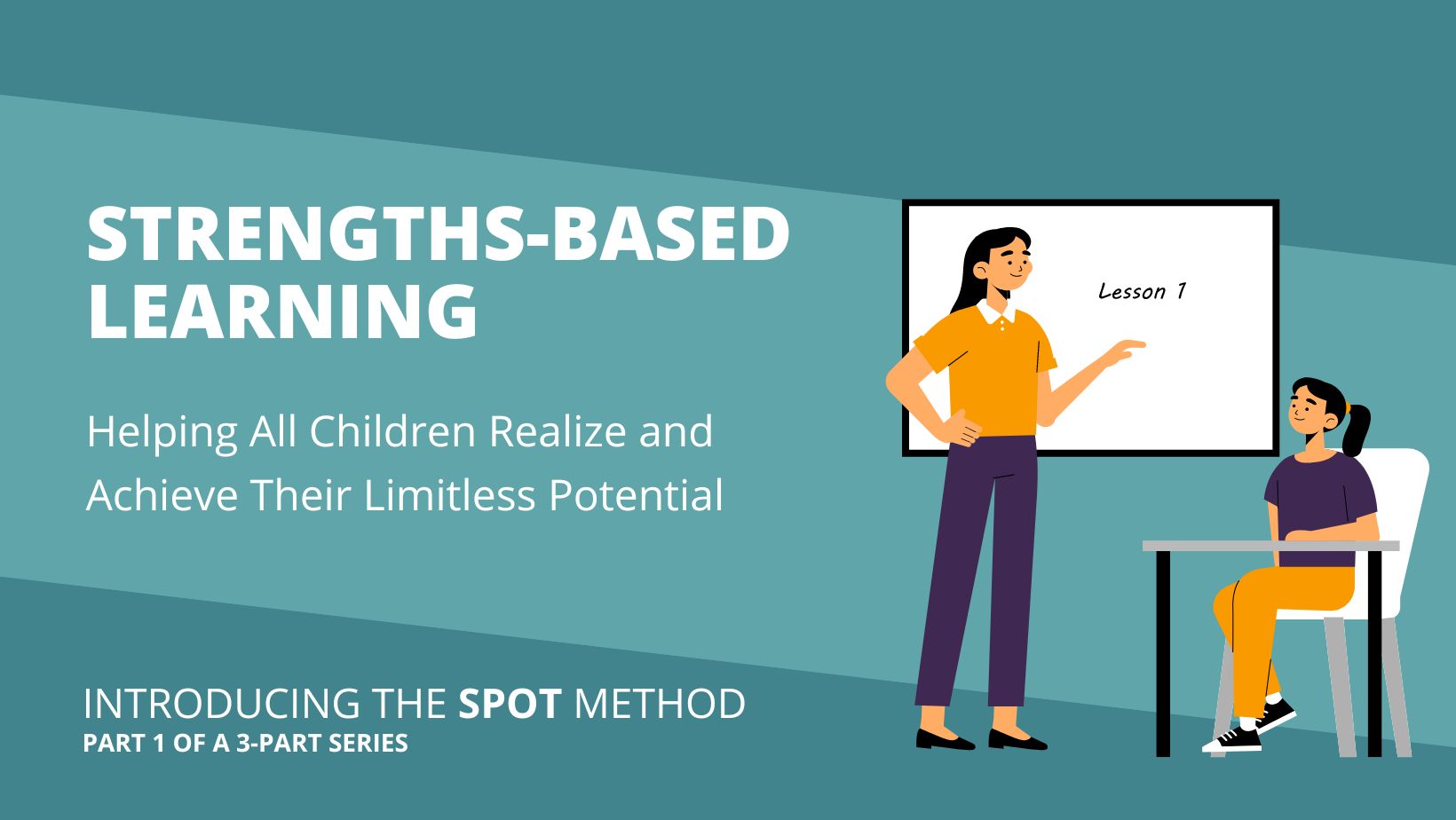
Strengths-based Learning:
Helping all Children Realize and Achieve Their Limitless Potential
Introducing the SPOT Method (Part One of a Three Part Series)
While the concept of focusing on individuals’ strengths to aid in developing personalized learning styles gained prominence in the late 20th century, strengths-based learning models rooted in educational and positive psychology have been around for several decades. Most notably, through the works of authors Donald O. Clifton and Tom Rath; some of you may be aware of Strengths-Based Leadership, StrengthsFinder 2.0, and How Full is Your Bucket? These books, along with the work of The Gallup Organizations’, Clifton Strengths, a personal development and assessment tool designed to identify individuals’ unique strengths, have led to a recent increase in strengths-based approaches to learning and education in schools.
According to Gallup, it is estimated that 3,000,000 children ages 10-14 have taken the Clifton Strengths Explorer, an online tool used to uncover and identify a child’s top three emerging talents. This assessment plays a key role in the early detection and cultivation of individual skills, setting a foundation for future growth.
Upon completing the assessment, each child’s unique set of strengths is categorized into one of these ten themes: Achieving (focused on goal accomplishment), Caring (empathy and compassion for others), Competing (driven by a spirit of accomplishing challenges), Confidence (self-assuredness and assertiveness), Dependability (reliability and responsibility), Discoverer (love for learning and exploration), Future Thinker (forward-looking and visionary), Organizer (planning and structuring), Presence (ability to command attention), and Relating (skilled at forming deep relationships). This approach helps children, parents, and educators understand and build upon these abilities further.
Although the strengths-based learning field is dynamic, and new programs and approaches are emerging, by integrating a strengths-based approach into how we interact with our children, we can begin to help our students become more invested in their learning and more engaged in the learning process and help them realize and achieve their limitless potential.
Using the SPOT process, as presented in Hacking Deficit Thinking by Byron McClure and Kelsie Reed, parents, coaches, and teachers can support a strengths-based approach in any setting to improve engagement and perseverance, and increase achievement and well-being.
SPOT stands for: Strength observation, paying attention to the individual skills and talents of a child; Progress over perfection, encouraging perseverance and practice; Opportunity to shine, helping a child identify their own skills and encouraging a sense of pride; and Teach, try, and tap into strengths.
Strengths-based learning paves the way for students to become more involved in their educational journey, increase their engagement and feel a sense of accomplishment. The implementation of the SPOT process extends this philosophy into practical, everyday settings and strengthens perseverance, achievement, and well-being.
In our next installment, we will dive deeper into each segment of SPOT, providing practical tools to help parents and educators begin implementing strengths-based learning into daily life.
Have a question about our schools and programs? Contact us at: admissions@thehelpgroup.org

Shayne M. Horan, Ed.D., Vice President of Schools at The Help Group, brings over two decades of transformative leadership, excelling in opening campuses, surpassing enrollment targets, and achieving ambitious goals through strategic planning. A visionary and thought leader, Shayne’s collaborative and thoughtful approach continues to drive sustained success. With a proven track record in educational growth, top performance accolades, and holding advanced degrees in Leadership and Educational Administration, Shayne inspires positive change and empowers individuals toward a greater cause.
